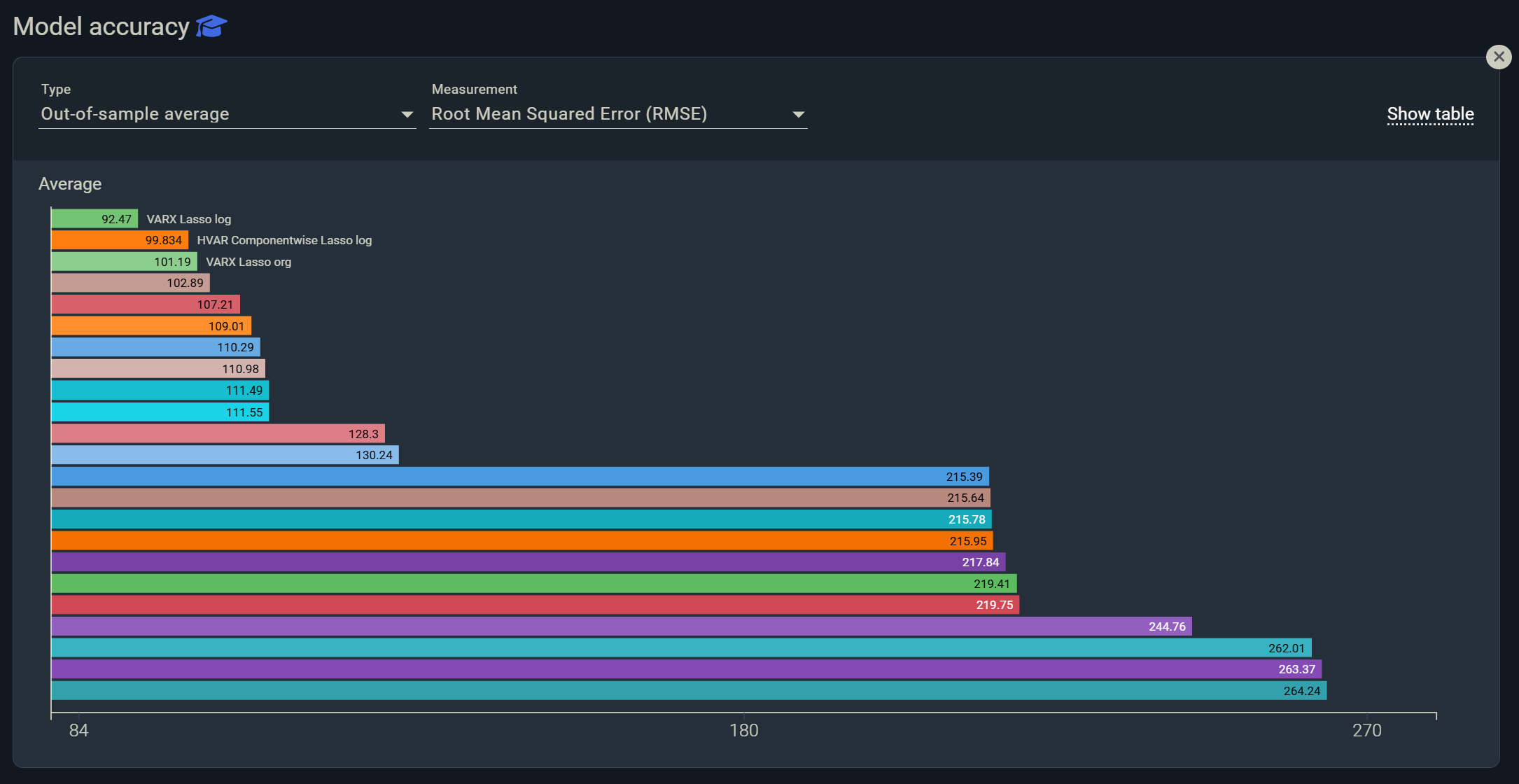Uncertainty is not the exception, it is the baseline. Scenario planning helps finance and planning teams translate uncertainty into numbers, but not all approaches are equal. Deterministic “best, base, worst” cases are easy to build, yet they fail to quantify likelihood. Simulation based scenario planning, for example Monte Carlo or conditional forecasting with Bayesian VARs, attaches probabilities to each path, so leaders can stress test plans and answer what is the chance we hit the covenant, or miss EBITDA. The approach is mathematically grounded in research such as Waggoner and Zha’s work on conditional forecasts, which computes exact finite sample forecast distributions, and is widely used in central bank style policy scenarios. Probability based scenarios also help counter availability bias, our tendency to overweight vivid events, especially right after shocks. Few FP&A suites offer this natively, which is why many teams keep their core planning stack and complement it with a specialized simulation tool that plugs into existing data and models. (Review of Economics and Statistics, 1999; ECB working papers on conditional forecasts; availability heuristic primer). (EconPapers)
Below we compare the best scenario planning software for 2025. We start with Indicio for simulation based, probability aware scenarios, then cover eight widely used planning platforms and spreadsheets that many teams already rely on. Each section explains where the tool shines, where it struggles, and how it can fit alongside your current stack.
1. Indicio
Indicio is a specialized forecasting and scenario simulation platform built for FP&A, demand planning, and risk teams. Unlike fixed what if toggles, Indicio runs simulation based scenarios using conditional forecasting, so you can model single shocks or complex multi event narratives and see the full probability distribution of outcomes. It connects to internal systems and external indicators, surfaces drivers and barriers behind the forecast, and is designed for non data scientists through a guided UI. Teams typically keep their ERP and planning system, then bolt on Indicio for rigorous scenario math and narrative to number traceability. (Indicio features, scenario analysis, use case, and background on conditional forecasting](https://www.indicio.com/features)). (indicio.com)
Pros:
- Simulation based scenarios with probabilities, supports single and multi shock narratives via conditional forecasting. (Waggoner and Zha; Indicio scenario analysis). (EconPapers)
- Explains outcomes with drivers and barriers, integrates internal and external data, and complements rather than replaces your core FP&A stack. (Indicio features). (indicio.com)
- User friendly interface, no coding required, fast model iteration and comparison. (Indicio platform overview). (indicio.com)
Cons:
- Higher subscription cost than open source packages.
- Closed platform, you cannot code and deploy your own custom models inside it.
- Requires an internet connection because it is a cloud service.
2. Microsoft Excel, plus add-ins
Excel remains the lingua franca of finance. Its built in What If tools, Scenario Manager, Goal Seek, and Data Tables, make deterministic scenario comparison accessible. However, native Excel does not simulate distributions, so probability based scenarios require add-ins like @RISK or RiskAMP. With these, analysts can specify input distributions, run Monte Carlo, and chart percentiles for KPIs. This is often the lowest friction path for teams already spreadsheet heavy, though governance and scale can become challenges as models grow. (Microsoft’s Scenario Manager documentation; @RISK overview; RiskAMP Monte Carlo primer). (Microsoft Support)
Pros:
- Ubiquitous, flexible models with low switching costs and familiar formulas. (Microsoft docs). (Microsoft Support)
- Powerful Monte Carlo via mature add-ins, probability outputs directly in the spreadsheet. (@RISK). (Lumivero)
- Huge ecosystem of templates, training, and community content. (@RISK guide). (help.palisade.com)
Cons:
- Native Excel scenarios are deterministic, no probability without third party add-ins. (Microsoft docs). (Microsoft Support)
- Model sprawl and version control risks at scale, governance requires discipline and tooling.
- Performance can degrade for very large simulations or complex workbooks.
3. Workday Adaptive Planning
Workday Adaptive Planning is a leading cloud FP&A suite with strong driver based modeling and widespread adoption in mid market and enterprise. Its scenario planning is built around fast what ifs, real time model recalculation, and collaborative workflows across finance and business partners. Teams can stand up parallel versions for rolling reforecasts and compare side by side. For probability aware simulation, customers typically augment Adaptive with specialized tools or spreadsheet add-ins. (Workday scenario planning e-book; partner overview of what-ifs). (forms.workday.com)
Pros:
- Fast multi scenario modeling with collaborative planning and versioning. (Workday e-book). (forms.workday.com)
- Strong adoption, ecosystem of implementation partners and templates. (Revelwood overview). (Revelwood)
- Integrates with ERP and HR systems for end to end planning.
Cons:
- Primarily deterministic what ifs, probability distributions require external simulation tools.
- Complex models can need expert model builders for performance and governance.
- Pricing is custom and can be higher than spreadsheet based approaches.
4. Anaplan
Anaplan’s Hyperblock engine supports large, multidimensional models across finance, supply chain, and workforce planning. Scenario planning in Anaplan is known for real time recalculation, side by side comparisons, and governance over model changes. It excels in enterprise scale collaboration where many functions contribute to a single plan. As with most planning suites, Monte Carlo simulation or conditional forecast distributions are not native, and teams often supplement Anaplan with dedicated forecasting or simulation tools for probability outputs. (Anaplan scenario planning resources; community guidance). (Anaplan Inc)
Pros:
- Enterprise grade modeling with real time, multi dimensional scenario comparisons. (Community article). (Anaplan Community)
- Strong governance and auditability across complex models.
- Broad use cases beyond finance, a unified planning fabric.
Cons:
- Probability based simulation typically requires external tooling.
- Model building skills are essential, learning curve for non specialists.
- Pricing and implementation effort can be significant for smaller teams.
5. Synario
Synario focuses on financial modeling with an emphasis on multi variable scenarios and presentation ready storytelling. Its architecture lets users define assumptions as levers, build many scenarios, and compare outcomes in real time visualizations for stakeholders, popular with corporate finance and higher education planning. While it emphasizes scenario richness and ease of use, probability distributions and Monte Carlo are not the primary mode, so teams seeking likelihoods often combine Synario with dedicated simulation or econometric tools. (Synario scenario planning; scenario analysis features). (Synario)
Pros:
- Intuitive scenario controls and multi scenario presentation for stakeholder buy in. (Synario solutions). (Synario)
- Purpose built financial modeling structure for non technical users.
- Strong visualization and communication layer for board ready outputs. (Features). (Synario)
Cons:
- Probability based simulation may require external tools for Monte Carlo or conditional VARs.
- Less suited for data science workflows compared with coding ecosystems.
- Integration breadth is narrower than large enterprise suites.
6. Vena Solutions
Vena combines a cloud database with an Excel front end, preserving spreadsheet flexibility while adding centralized data, workflow, and controls. Its scenario planning provides driver based models, rapid what ifs, and side by side comparisons, all in the familiar Excel interface. For teams standardizing on Microsoft 365, Vena offers a pragmatic middle ground between spreadsheets and enterprise planning platforms. Probability aware outputs typically depend on Excel add-ins or specialized tools connected to Vena. (Vena scenario planning; template hub). (Vena Solutions)
Pros:
- Excel native experience with governed data and workflows. (Vena solution page). (Vena Solutions)
- Rapid what ifs and driver models with familiar formulas and templates. (Template hub). (Vena Solutions)
- Good fit for finance teams standardizing on Microsoft ecosystem. (Partner overview). (Vena Influential Software)
Cons:
- Probability distributions require Excel simulation add-ins or external engines.
- Governance improves over raw spreadsheets, but complex models still need best practices.
- Pricing is custom, cost scales with users and modules.
7. Productive
Productive is an all in one agency management platform covering budgeting, time tracking, resource planning, and profitability analytics. For services firms, it brings operational and financial data together, enabling rate card experiments and revenue capacity scenarios. Scenario planning lives close to delivery metrics, which helps align pipeline, staffing, and financial plans. It is not a traditional FP&A suite or econometrics tool, so probability based simulations or macro driven scenarios usually require complementary software. (Productive scenario planning overview). (Productive)
Pros:
- Tight linkage between resource plans, rates, and budget scenarios for agencies. (Productive overview). (Productive)
- Unified operational data reduces reconciliation work across tools.
- Useful for revenue capacity planning and margin management.
Cons:
- Not purpose built for probability simulation or macroeconomic scenarios.
- Less breadth in enterprise FP&A features compared with dedicated suites.
- Best suited to agencies, generalization to other industries may be limited.
8. Limelight
Limelight is a modern cloud FP&A platform with driver based planning, multi scenario modeling, and collaborative workflows. It emphasizes speed to value, real time updates, and integrations with common ERPs. Limelight supports quick scenario creation for budgeting, forecasting, and workforce planning. As with peers, probability distributions and Monte Carlo are not native focus areas, so teams often augment Limelight with simulation tools when likelihoods or stress testing are required. (Limelight scenario planning content; capabilities). (golimelight.com)
Pros:
- Driver based planning with fast multi scenario comparisons and real time updates. (Capabilities). (golimelight.com)
- Cloud native collaboration and workflow. (Limelight site). (golimelight.com)
- Integrations with common ERP and BI systems. (Limelight 2025 roundup). (golimelight.com)
Cons:
- No out of the box probability simulation or conditional VARs.
- Smaller ecosystem compared with the largest suites.
- May require services to tailor complex enterprise models.
Why simulation based scenarios matter
When boards ask what is the chance we hit liquidity limits if rates rise and demand slips, a deterministic triangle lacks an answer. Conditional forecasting and Monte Carlo produce distributions around KPIs, allowing percentile based commitments, early warning thresholds, and portfolio level risk aggregation. The macro literature formalizes this, from Waggoner and Zha’s Bayesian conditional forecasts to central bank scenario applications in large VARs, and more recent work extending conditional forecasts to larger systems with soft constraints. Coupling these methods with business drivers yields scenarios that are both explainable and realistic. (Waggoner and Zha, 1999; ECB applications; large Bayesian VAR conditional forecasts). (EconPapers)
Guarding against human bias
In volatile periods, managers overweight the latest shock, a classic availability heuristic effect. Probability based scenarios discipline judgment by anchoring narratives to quantified likelihoods and confidence intervals, making it easier to communicate risk to stakeholders and avoid overcorrections. (Availability heuristic primer). (courses.eller.arizona.edu)
How to choose, complement, and integrate
You do not need to rip and replace your planning system. Most organizations keep their general purpose FP&A suite or Excel models for operational planning, then complement with a specialized simulation engine when they need probabilities, conditioning on macro paths, or multi event narratives. Excel plus @RISK is a pragmatic start. For scale, purpose built engines like Indicio slot in alongside Adaptive, Anaplan, Vena, or Limelight via data connectors and scheduled runs, pushing results back to BI for distribution. (Excel + @RISK; Indicio integration positioning). (Lumivero)



